Ibanez Baritone
I haven’t had any previous experience with a baritone acoustic, and it’s an interesting breed. The longer scale neck and the lower darker voicing will definitely require a shift in my playing approach, but the tradeoff is an exciting new flexibility when singing with my limited bass vocal range.
Last year in my Fearless Voice post, I was brainstorming options for playing and singing songs that too high for my voice:
Another option to consider is a baritone guitar, which transposes everything down a 4th. (i.e. playing an open E chord shape sounds as a B chord). But I’ve still never tried playing one- it’s on my todo list!
I really wanted to try playing a baritone before buying. So I visited local guitar stores, but only found a couple to try. First was a used Taylor 8 string, which was awesome and gorgeous, but very expensive. And the pair of doubled octave-up strings gave it a bit too much of a “niche” sound, less likely to apply to the general single-guitar singer-performer application I had in mind. The only other baritone I found to try was an Alvarez which sounded horrible and played badly- an all-too-common casualty of Guitar Center customer abuse. Also, the aesthetics of the Alvarez are not my cup of tea (what’s up with that bridge shape??)
At least in trying those, I was able to confirm that the baritone is worth a shot, and that the 27″ scale length, while definitely an adjustment, would be doable.
Looking at Sweetwater, my go-to when I have to resort to buying a guitar online, the only two choices were a Taylor and the Ibanez AE255BT. Neither of these were available locally to try, so it was going to be a gamble no matter what, but Sweetwater has a good return policy. So…. The Taylor was too expensive for a first experiment and lacked a cutaway, so I decided to give the Ibanez a try. There were a few to choose from, and I found a nice sample with an evenly book matched top and a radiant back.
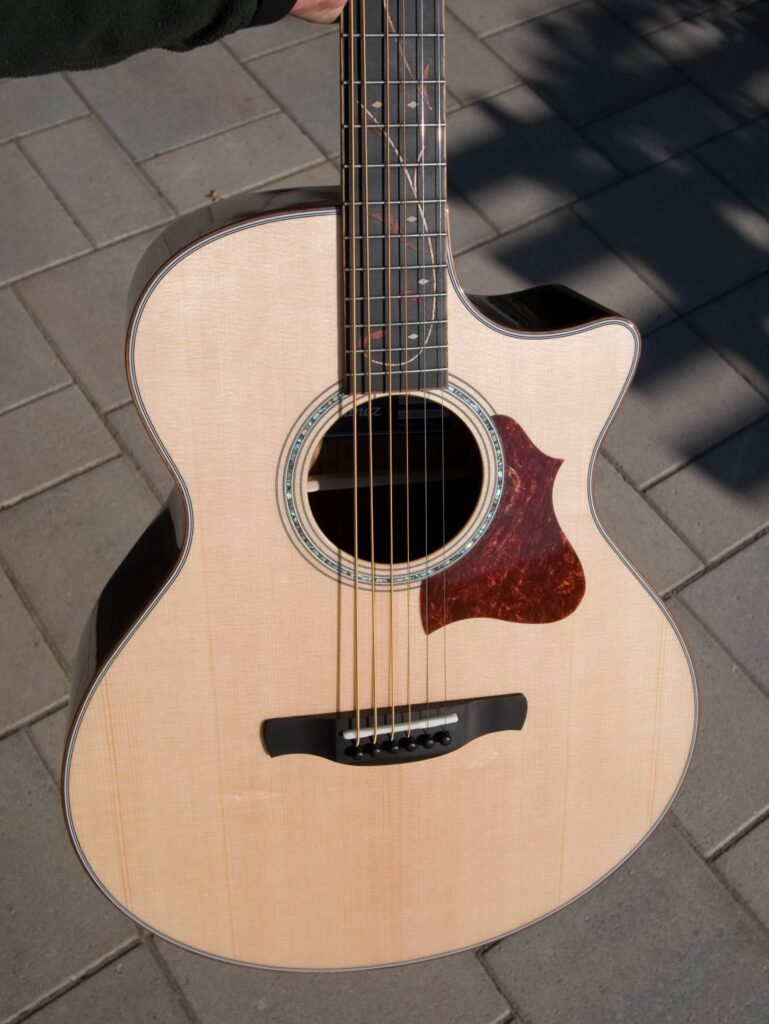
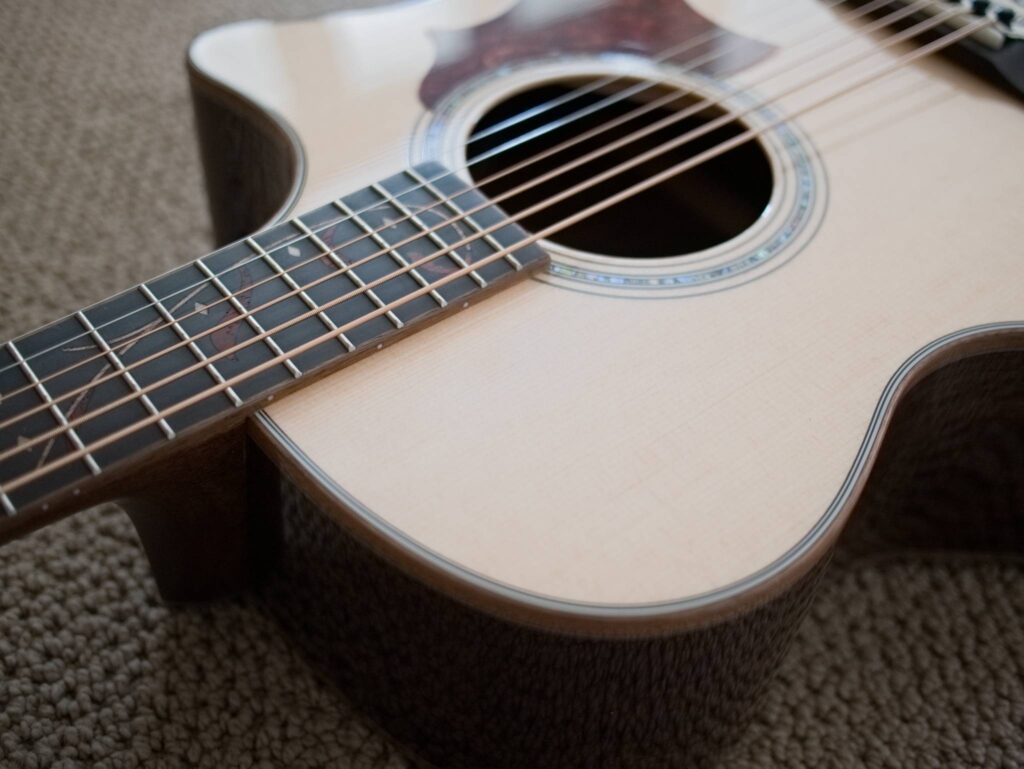
It’s an attractive guitar, with solid spruce top, laminate Ovangkol back and sides with walnut bindings, and nyatoh neck. The fretboard is blackened maple (never seen that before!), with a vine and leaf wood inlay that curls across the entire fretboard. The wood inlay is a bit frou frou, but is subtle enough and I think I can get used to it.
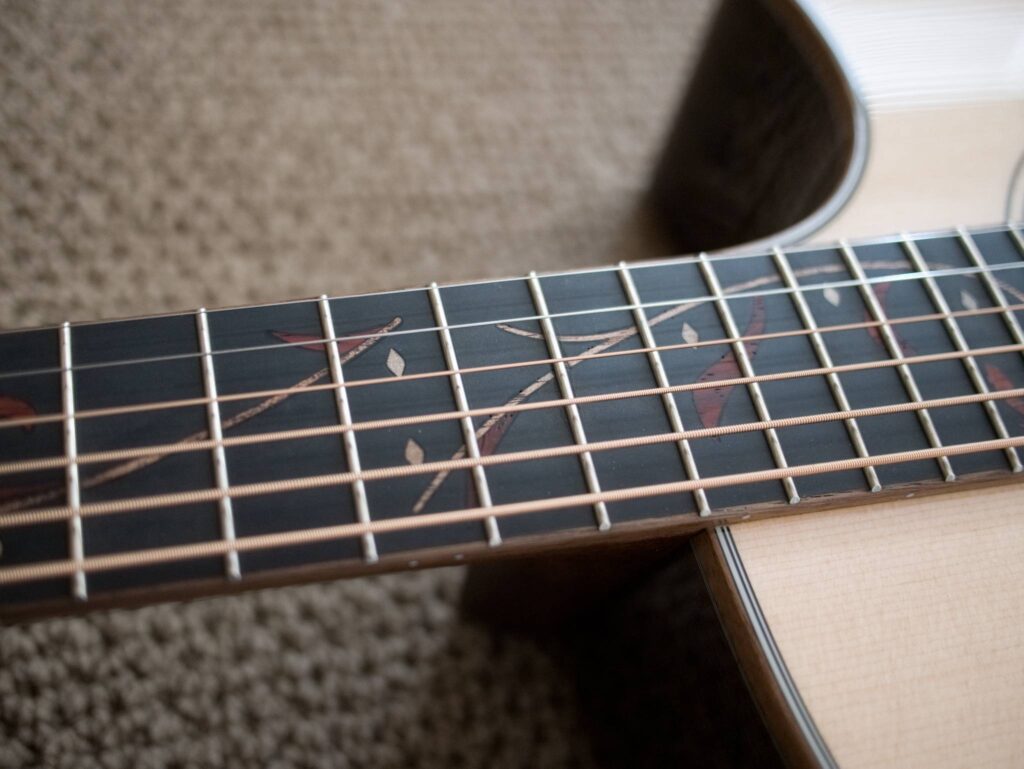
There’s an abalone rosette around the soundhole, and a classy headstock design with simple Ibanez logo and decorative inlay. The nut and saddle are bone.
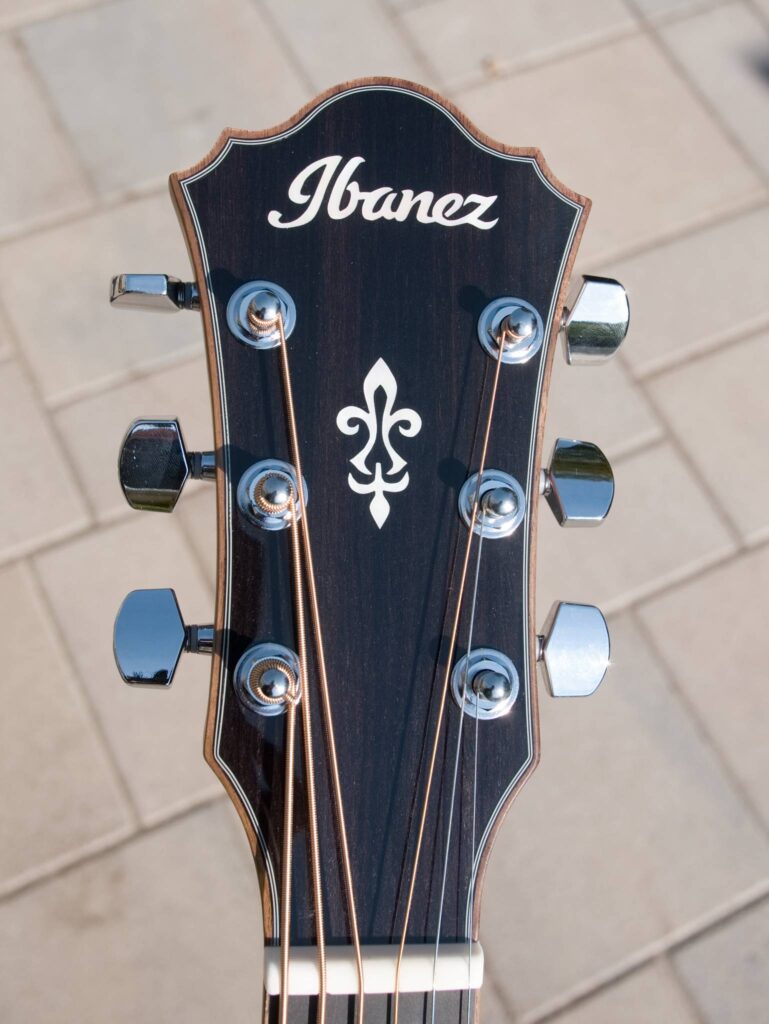
The ovangkol is gorgeous. When the light catches the back just right, there is a real 3d quality to it:
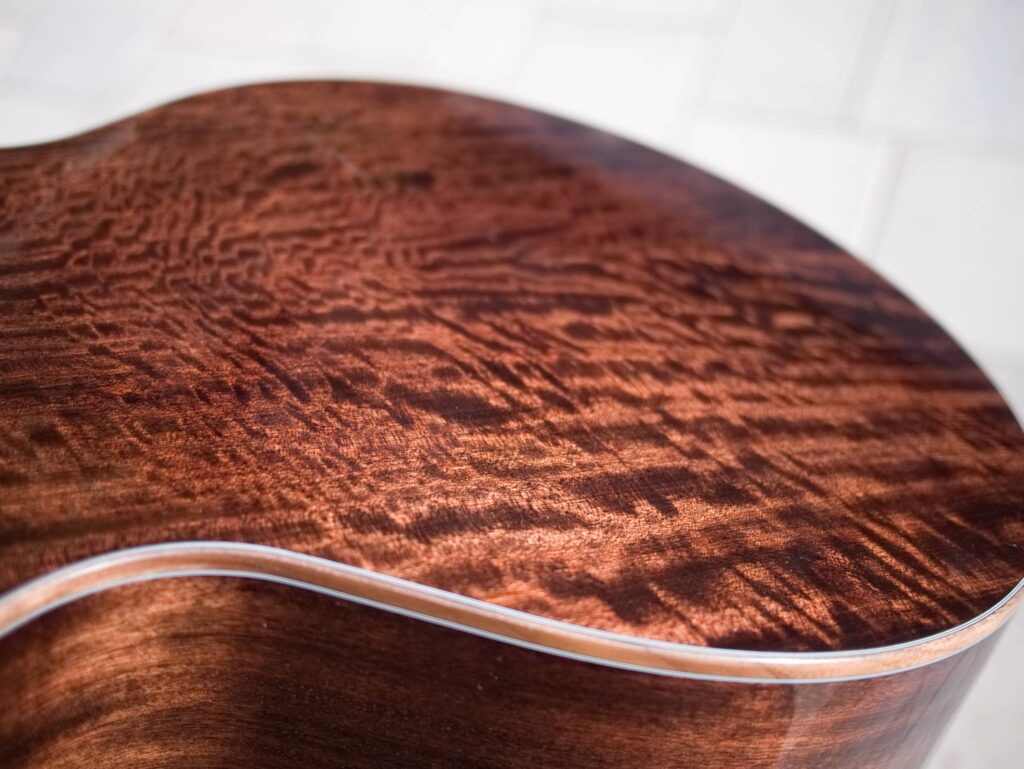
On the sides, the Ovangkol looks similar to mahogany, with an even straight grain.
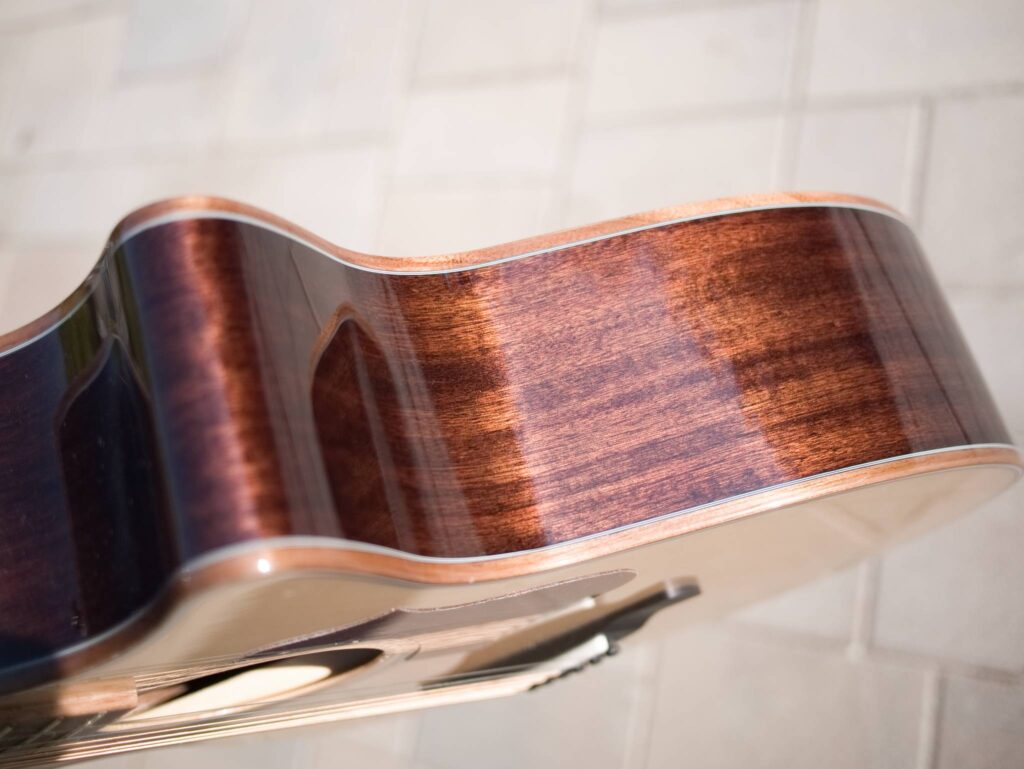
The neck has a nice smooth satin finish, and isn’t too chunky in the hand.
There’s an under-saddle piezo pickup, and end pin jack. It uses a couple CR2032 batteries. No on-board tuner. The piezo sounds like a piezo. Don’t love it, but it’s serviceable.
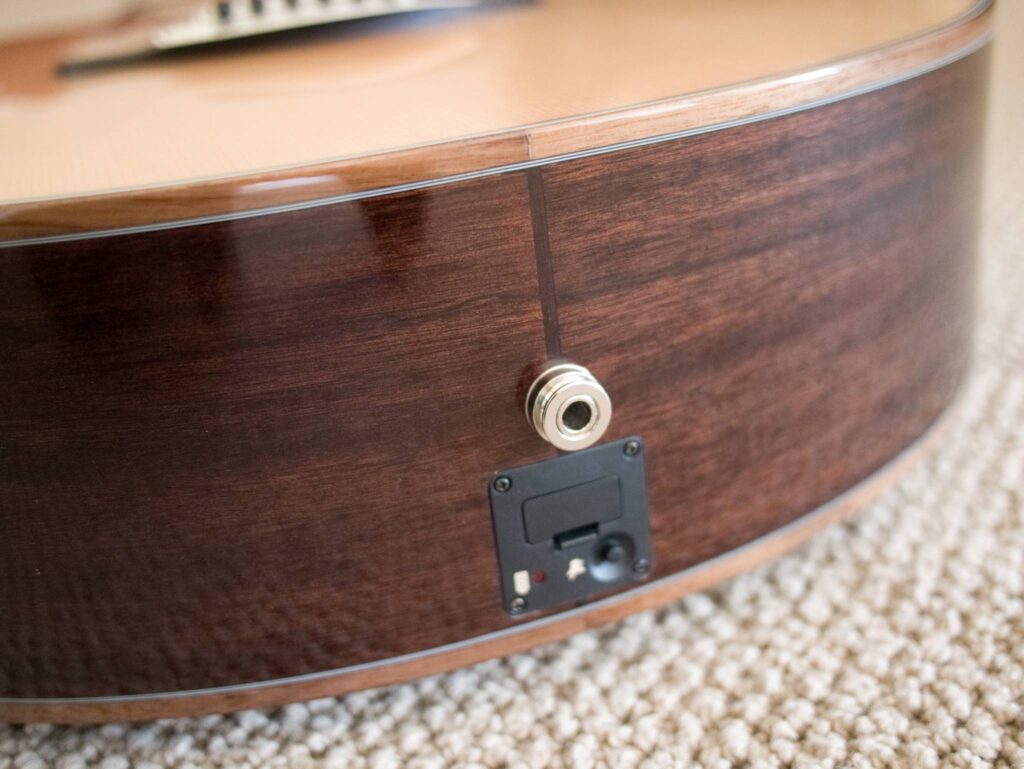
Overall, the cosmetics and workmanship are excellent.
The guitar played reasonably well out of the box, but the action was a little high, and the intonation was a bit off on a few strings.
The guitar was set up with D’Addario EXP23 coated baritone strings, .016, .022, .029 .048, .060, .070. Those are some massive strings, but due to the longer 27″ scale length and lower tension, they surprisingly don’t feel that difficult to play. Trying to barre at the first fret is a challenge at the best of times, and these strings certainly don’t help. But overall, while there is some increased hand fatigue playing the baritone, it’s not as bad as I feared.
The truss rod works well, accessed through the sound hole, and I was able to lower the strings a bit. But it does appear that the truss rod reaches maximum tension before I’m able to get the strings as low as I’d like.
The intonation is more concerning, as there’s no simple way to fix this without saddle and nut adjustments. Furthermore, I can’t find these D’Addario EXP23 strings anywhere- they may actually be discontinued. So I’ll probably need to switch strings, maybe to the Elixir 16-70 Nanoweb which have slightly different string gauges (.016 .022 .030 .047 .059 .070), so that will also require intonation adjustments. More on that later!
The guitar is inherently darker-sounding than a 25″ scale acoustic. You can’t expect to strum typical open-position chords without it sounding muddy. It really makes you rethink your fingerings and voicings. And there’s an interesting perceptual shift that occurs when playing the baritone. When I first pick it up after playing my other guitars, I feel like it’s too dark/low/muddy. But then, after playing for a few minutes, it just sounds right. And then, when I switch back to my Taylor (25.5″ scale length, tuned E-to-E), which I ordinarily think sounds perfect, everything sounds way too high and bright! They definitely have their own voices- it’ll be interesting to record something that layers both guitars.
Using a capo with the baritone offers a lot of flexibility. Capo’ing a the 5th fret makes it the same pitch as a standard tuned E-to-E acoustic. When I’m singing covers, my two favorite capo positions are 4th fret (Eb) and 2nd fret (Db).
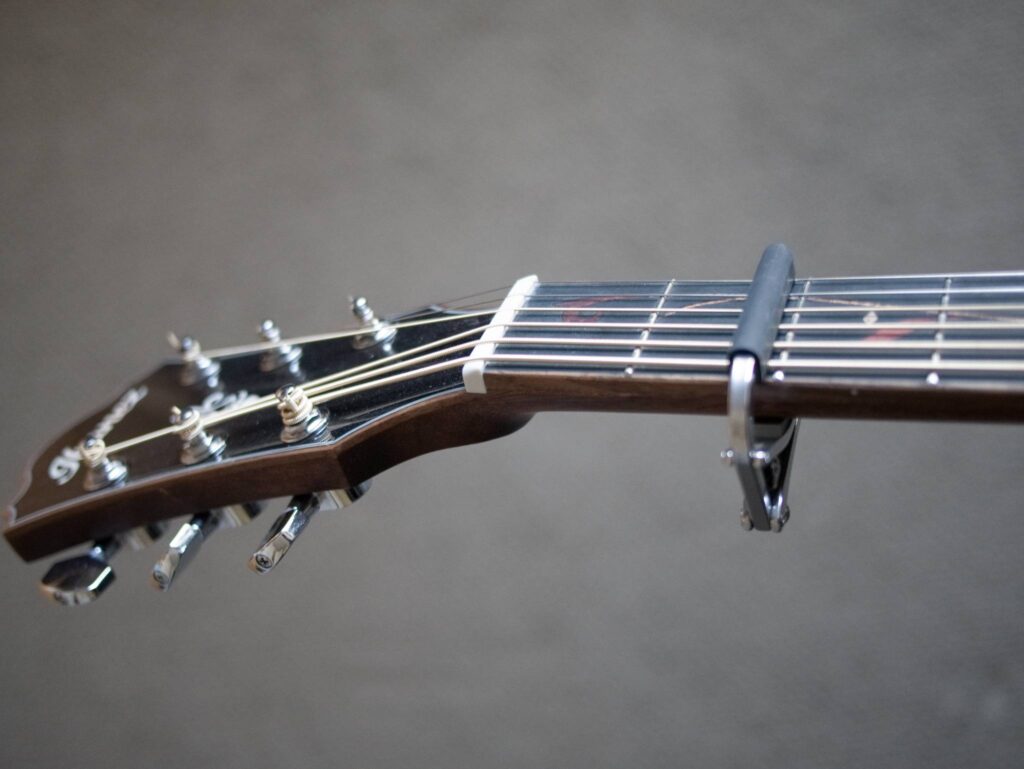
For example, when singing Stone Temple Pilot’s Plush, I previously would have to tune my guitar down a couple steps in order to reach those high notes, and it was still a struggle. I couldn’t tune down further without the strings getting too floppy. Now with the baritone, I just capo at the 2nd fret and it’s golden, and singing that song feels great!
I’ve found that my Shubb Deluxe capo works the best with this guitar – even tension and minimal tuning issues. I would have preferred to use my D’Addario tri-action capo because it only needs a single hand to mount it, but it pulls the strings unevenly on this guitar and makes it sound out of tune. I prefer to capo on the even-numbered frets, so when I look at the guitar the dots appear to be in the right place. When I capo on the odd frets, I tend to get confused about my relative finger positioning. I guess that’s just how my brain works!
Playing this guitar is an interesting experience. I absolutely prefer the sound and feel of my Taylor, which sparkles and shimmers in a way that is missing here with the Ibanez. However, sitting down to sing a bunch of cover songs, the flexibility afforded by the baritone with a capo is outstanding and confidence-boosting. So if I’m going to sing, I pick up the Ibanez. But if I just want to play, I pick up the Taylor.
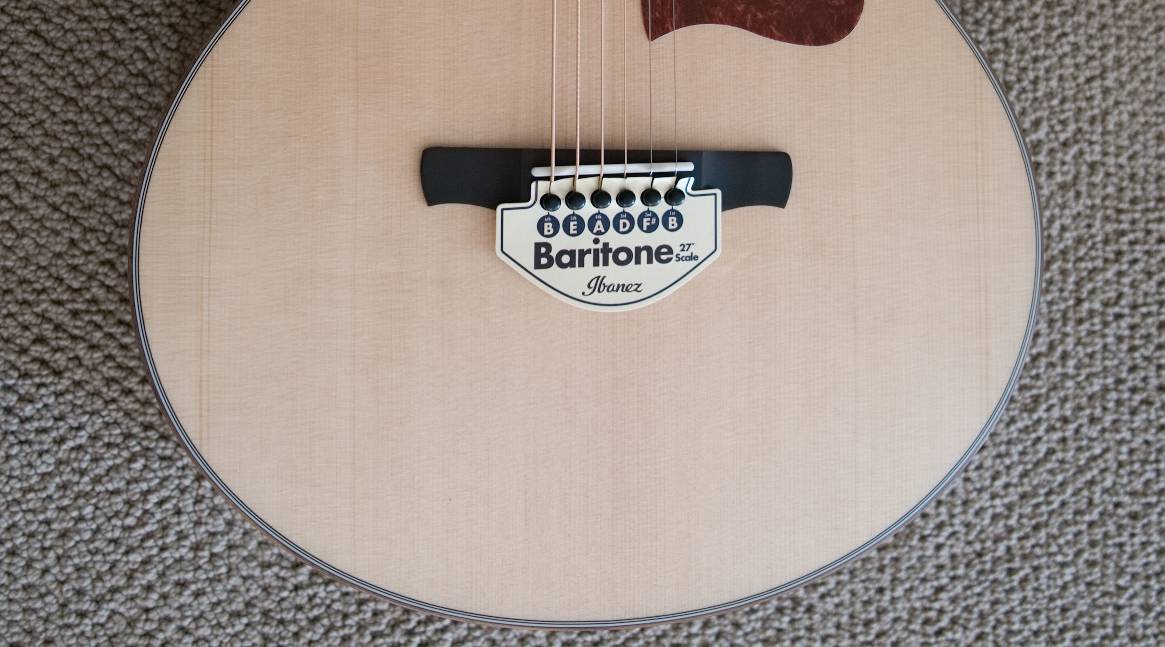
August 4, 2020 @ 10:25 am
Hi and thank you for posting this, I’m having huge action issues, first 4/5 frets are ok but then … 💥 way too high. By the time I get to the ninth fret my hand struggles and intonation … well not good. When I received this guitar ( 1 week ago) I thought I could adjust with truss rod… nope I was able to get 1/8 of a turn and that was that no more room. I was so excited to play and experiment with a baritone. I guess I’ll ha e to put some money into having the bridge worked on. In short, very nice looking but playability is a 2 / 10
August 4, 2020 @ 3:49 pm
Hi Aaron- I also found that I wasn’t able to get the action where I wanted before I maxed out the truss rod adjustment. I ended up replacing both the nut and the saddle. There was no off-the-shelf saddle replacement I could find in the right size, so I ended up doing all the work myself. It was my first time cutting a nut and saddle from blanks, and it was quite a process. I have a bunch of pictures and plan to write it up, but haven’t got around to it. In the end the action is much better and the intonation is also much improved- though I couldn’t get the low E string right, so it still gets sharp as it is played up the neck. Frustrating!